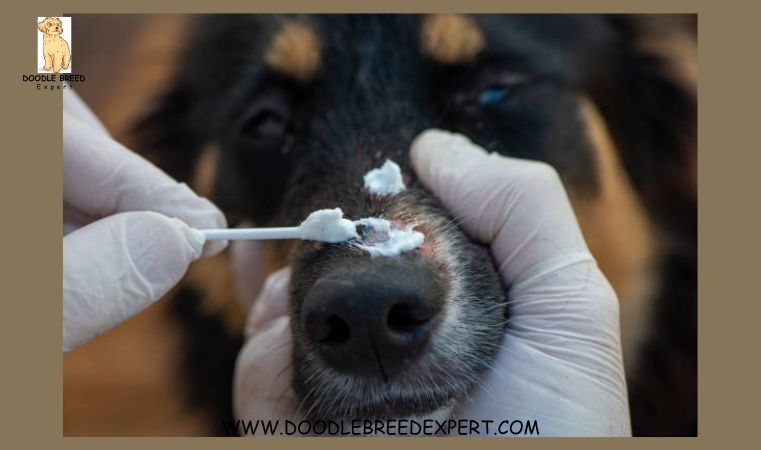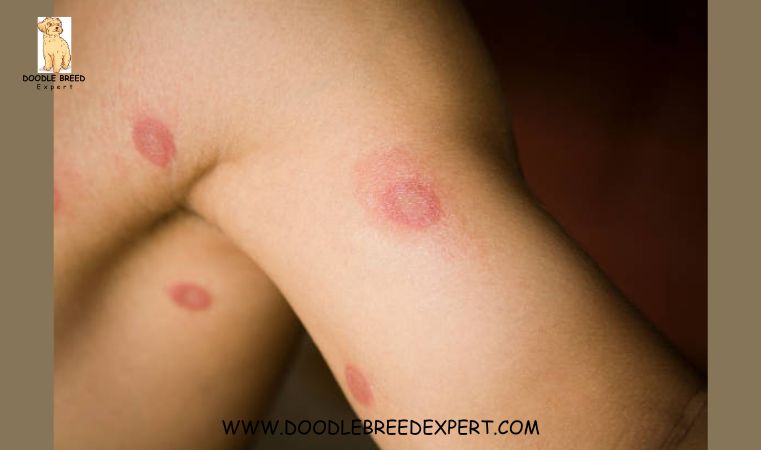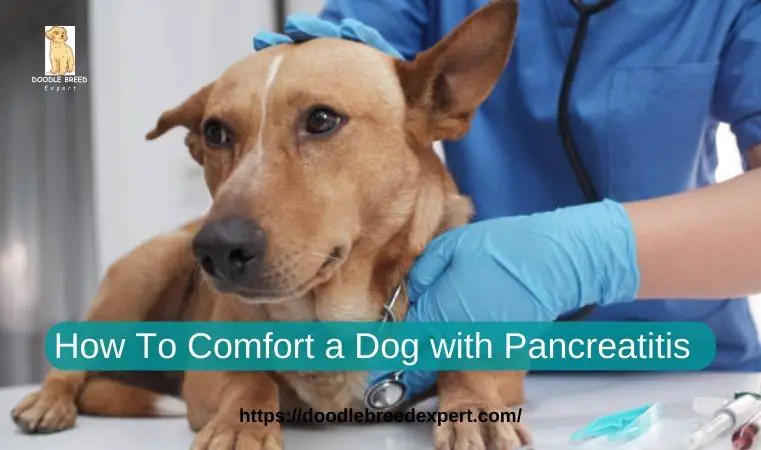Ringworm is a fungal infection that is quite common among dogs and very irritating and uncomfortable for them. “What Does Ringworm Look Like on A Dog?” is a question many pet owners ask if they get a hint that their furry friend is getting infected. Usually, a ringworm looks like a circular, red patch on the skin with a raised edge that will resemble a ring for which it is called a ringworm.
These lesions may also be scaly or crusty and can cause the hair to be lost in the affected area. Immediately following these, dogs with ringworms may scratch overly due to itching and be further irritated. Immediate identification and appropriate treatment are necessary so that infection doesn’t spread to other pets and human beings within the household.
What is Ringworm?
Ringworm is a misnomer, as it is not caused by a worm but rather by a fungus. Scientifically, it is known as dermatophytosis. It is an infection of the skin, hair, and nails of an animal or human being. Common symptoms of this condition in dogs are hair loss, itching (pruritus), and irritated skin. Although it can be very irritating, Ringworm is typically not life-threatening and can be treated effectively under veterinary care.
This fungal infection has been widely reported in dogs and is relatively common in other domestic species. The fungus that causes dermatophytosis in dogs is most commonly transmitted through direct animal-to-animal or animal-to-person contact. Other routes include fomites, bedding, grooming equipment, and other environmental exposures, including the floor on which the infected animal may have been. It is from this background that good hygiene and the cleaning of living environments for pets should be pretty instrumental.
Humans are also susceptible to ringworm infections from their infected dogs. This ultimately explains a lot about how crucial it is to take quick steps by recognizing the problem and getting the right treatment for a sick dog suspected of carrying the Ringworm. A human may have the same symptoms, including sores or rashes in the form of rings, itchiness, and red-scally patches on the skin. Diagnosis and treatment of Ringworm in dogs call for seeking veterinary attention to prescribe appropriate treatment, which can be topical treatments or oral medications that contain antifungal components.
Otherwise, a pet owner can proactively protect the pet and themselves by knowing how the Ringworm is transmitted, signs of infection, and possible treatments. What Does Ringworm Look Like on a Dog?
What Does Ringworm Look Like on a Dog?
Ringworm in dogs can show quite a variety of dermatological signs, and sometimes it is clinically overt but, paradoxically, quiet other times. Vital clinical signs include the following:
- Circular or Ring-like Lesions: These are standard, typical signs that generally occur along with redness and swelling.
- Hair Loss (Alopecia): The affected areas can show some patches of hair loss, which are usually different in shape and size.
- Red, Inflamed Dermatitis: The skin can become redder and more inflamed in appearance.
- Dandruff and Scales: The skin may be shackled with scales, presenting an appearance of dandruff.
- Itching (Pruritus): Dogs infected with Ringworm constantly show severe.
- Dry and Brittle Hair: The hair in the infected area might turn dry and brittle.
- Hyperpigmented Skin: The skin may appear darkened in coloration in the infected areas.
- Nodular Lesions or Erythema: Raised nodules and redness may develop, contributing to the pain.
- Inflamed skin around nails: There can be redness and swelling in the areas around claws or edges of nails.
What Does Ringworm Look Like on a Dog? Contact your veterinarian if there are combinations of these symptoms, especially if they are severe or do not resolve independently, as early detection and treatment can help manage the infection and prevent its spread to other pets or people in the household.
What causes Ringworm in dogs?
Ringworm in dogs is caused by a fungal infection transmitted through several ways. The significant agents causing this fungal infection are species of dermatophytes, which survive best in warm and humid environments. Transmission to a dog occurs from either direct contact with an infected animal or when that infectious material is in the living environment. Fungal spores are carried very well by food dishes, grooming tools, couches, carpeting, and textiles, which may remain contaminated for several months.
Dogs also have the potential to get infected by Ringworm when playing outside because fungi also occur in large numbers in the soil. These may infect dogs through contact with soil that has been contaminated. Most times, a dog’s immune system should be able to fight it off, but age, overall health, and the pathogenicity of the fungal agent can affect the likelihood of an infection.
When improperly cleaned, it can remain on surfaces or get entwined into carpets, drapes, linens, and other house textiles. The fungal spores could also spread through the dog’s shed fur to different parts of the house.
It is worth mentioning that some dogs are carriers of the fungus without necessarily being affected, so there may well be asymptomatic spreaders of the infection. If one dog in a household is diagnosed with Ringworm, having other pets checked out by a veterinarian would be prudent.
To prevent the spread of Ringworm, fellow dog owners should be warned, and care should be taken with the thorough cleaning and disinfection of the infected places and articles. This then becomes a vigilance process in that you will try as much as possible to avoid the other animals and humans from getting it.

How is Ringworm Transmitted?
Ringworms are spread from animal to animal or person through direct contact and by fomites. The infective fungal spores can live for months in the environment—on bedding, grooming tools, furniture, and carpets. The fungus occasionally lives in soil, thus rendering environmental contamination possible from outdoor play. Dogs can contaminate their environment and spread spores through their shed fur.
Human-to-animal and animal-to-human transmission is possible, and hygiene and prompt treatment are crucial. Key accomplishments in preventing the spread of Ringworm are good environmental decontamination, constituted by the regular cleaning and disinfection of bedding and other areas where an infected cat has been, and minimal restriction of contact with the infected animals.
How is dog ringworm diagnosed?
If you believe your dog has Ringworm, and you’re taking it to a vet, buckle up for this examination, which will leave no stone unturned with the diagnosis process. Here is what usually happens:
Initial Assessment and History:
The vet will examine your dog to rule out other conditions and ask you questions about recent behavior and if there are any signs of symptoms. If you suspect it is Ringworm, ensure that you inform the vet, and they will take steps to sanitize it so as not to catch the infection.
Visual Inspection:
The vet should check for the red characteristic lesions on the skin. Mostly, the lesions are circular and usually crusty and scaly. Typically, this is not definitive since other conditions, such as skin mites, hotspots, or allergies, may present with similar lesions.
Wood’s lamp examination:
A wood lamp, which emits ultraviolet light, may be utilized by the veterinarian to inspect your dog’s fur coat. Some fungi, like Microsporum canis, will fluoresce under this light, showing a greenish glow. This can help diagnose Ringworm, but it is not 100% reliable since not all dermophytes are fluorescent.
Fungal culture:
This is the best diagnostic method. The vet will take a sample of hair or skin cells from your dog and send it for laboratory examination. The culture will usually be positive within ten days but may take a month if the particular fungal spore grows slowly.
Microscopic analysis:
Another technique that the veterinarian may employ includes using a microscope to detect the existence of fungal spores in hair or cells from the skin. This technique is, however, far less likely to be used, given the lowered validity relative to fungal cultures.
Skin Biopsy:
Sometimes, a skin biopsy is done much less frequently because it is invasive and not as accurate.
Early detection is the single most crucial thing regarding Ringworm. In most cases, even if the other dogs are not indicated to have symptoms, it might be wise to have them checked also when one dog gets it. This is because early detection allows for effective treatment and control through prompt treatment and preventive measures within the infection.
Read also: Australian Labradoodle Dog Breed Information and History
What is the treatment for dog ringworm?
When a veterinarian has established that your dog is infected with Ringworm, he will advise you on total treatment to eliminate the infection. Following are some of the primary methods used to treat Ringworm in dogs:
Topical Treatments
These include antifungal ointments and creams to be applied directly to the affected areas once a day for six weeks maximum. Medicated shampoos prescribed to be applied twice a week can also be used. After washing the coat with the shampoo, one is expected to leave it undisturbed for five minutes and then rinse off thoroughly. One is encouraged to wear gloves while applying these medications; however, if any contact is made, washing that hand thoroughly would suffice.
Oral Medication:
Oral antifungal medications are also usually prescribed along with topical treatments. These are typically prescribed for a minimum of six weeks. To monitor the effectiveness of the treatment, skin or hair samples of your dog may be taken by the veterinarian every two weeks.
Environmental Management
Personal hygiene of the animal is essential to prevent the transmission of the infection to humans or other animals. The dog’s environment should be cleaned by keeping them confined to a carpeted area and regular vacuuming and mopping of the place. Use antibacterial cleaners and bleach for disinfection, as they can kill fungal spores. Equipment used for the dog, like bedding, collars, and brushes, should be washed.
Quarantine:
An infected dog must be isolated from other pets and humans to prevent transmission. The animal’s quarantine should be maintained even during treatment, as it might take up to three weeks for the dog to stop being contagious.
Through these treatment steps, you will effectively manage and clear your dog of Ringworm, making the environment in your house safe for your pet and the other household members.

What is the average duration of recovery from Ringworm?
The average time a person takes towards recovery from Ringworm depends on the severity of the infection. Simple cases can recover completely in a few weeks, while complicated ones might take several months.
Hair loss sites usually enlarge and increase over the first week or so of treatment. By the end of the second week, though, regrowth should have merged to where it’s visible in most affected areas. If this hasn’t happened, you should, at this point, contact your veterinarian for further advice.
Fungal culture tests will be performed every two to three weeks by your veterinarian during treatment to monitor how successfully the treatment plan works. Dogs with three consecutive test results that are precise of the fungal infection will be considered for release from further treatment.
It is essential to give your dog the entire course of medication. If the symptoms start to decrease, do not stop treatment. This can potentially allow the Ringworm to return, and the treatment would have to begin again.
Along with the medicinal treatment of your dog, you may need to decontaminate anything that the pet came into contact with the Ringworm before infection; this includes food and water dishes, grooming equipment, and dog bedding. Cleaning sporing fungus can be done by scrubbing or cleaning ducting furniture and carpets regularly.
Even though getting rid of Ringworm in the dog and household is labor-intensive, you can achieve it quickly if you only stay through the entire treatment plan.
FAQs: What Does Ringworm Look Like on a Dog?
Is Preventing the Transmission of Ringworm in Canines Feasible?
The prevention of ringworms in dogs can be best achieved with some ease but with great effort. Since ringworms can survive in an environment for six weeks to eighteen months, it has to be taken seriously. Direct contact with infected animals or environments is how it gets transmitted. All surfaces—carpets, bedding, curtains, etc.—must be sanitized to prevent the persistence and spread of fungal spores.
Should I Place My Dog in Quarantine During Treatment?
“Yes, quarantine your dog during treatment.” Even if asymptomatic, the dog can still be a carrier for ringworm disease, and fungal spores will easily survive in the environment. This will help contain the infection and reduce the probability of spreading to other animals and humans. Taking your dog away from people and other animals simplifies sanitation work and reduces constant cleaning to just one room.
How Long Must a Canine Infected with Ringworm Be Quarantined?
Ideally, a dog-detected Ringworm should be quarantined during treatment for about six weeks. The duration makes it easier to manage the infection properly and minimizes the chances of reinfection. Moreover, it is critical to have clinical follow-ups with veterinary doctors at appropriate time intervals to ascertain if the treatment needs alteration or adjustment due to a poor response.
Could a Dog transmit Ringworm?
Yes, humans can get Ringworm from such a dog, especially if there are open sores, scratches, or skin diseases like eczema. The problem is more severe for people with compromised immune systems, such as young children, older people, and those going through therapies like chemotherapy. Such susceptible people must keep away from infected dogs.
How can the transmission of Ringworm be prevented?
Since ringworm spores are so hardy and can persist in the environment almost indefinitely, while you are treating it, you should isolate your affected dog in one room so that the spores do not infest the entire house. If your dog is treated and released back into an area still contaminated with the causative fungus, he will be reinfected.
Spores from soft furnishings and carpets can be effectively extracted by steam cleaning or regular, thorough vacuuming. Burn the contents of a vacuum bag after emptying it, following a good spore vacuuming to ensure the spores are dead.
Can cats transmit Ringworm to dogs?
It is a fact that cats can transmit Ringworm to dogs. Dogs and cats are said, by most people, to be biologically different from each other, yet Ringworm can easily be transmitted from one to the other. Because this condition is very highly contagious, cross-contamination is very high risk. This particular risk should be seriously considered in multi-pet households.
Conclusion: What Does Ringworm Look Like on a Dog?
What Ringworm looks like on a dog is critical and ensures that one can identify exactly what it is in good time, seek veterinary attention without delay, and prevent the spread of the disease. By identifying characteristic circular red lesions that are diagnostic of Ringworm, pet owners can get active in caring for their dogs’ health. This means less opportunity to transmit it to other animals or humans.
Symptoms can include a rash in some places, spreading to other body parts over time. Early detection will allow timely treatment, thus eliminating the hassle the pet would go through and reducing the possibility of further infection. Pet owners’ awareness and watchful behavior will be crucial in managing ringworm infections among their furry friends, promoting their well-being, and maintaining a healthy culture among all house members.
Note: The information shared here is for educational purposes only and should not be construed as medical advice for pets. We strongly recommend scheduling an appointment with your veterinarian to diagnose your pet’s condition accurately.
References: What Does Ringworm Look Like on a Dog?
- W. (2024, May 17). Ringworm in dogs: Everything You Need to Know. https://wagwalking.com/condition/ringworm
- Ringworm (body) – Symptoms & causes – Mayo Clinic. (2022, April 26). Mayo Clinic. https://www.mayoclinic.org/diseases-conditions/ringworm-body/symptoms-causes/syc-20353780
- Dog Ringworm: What Does Ringworm Look Like on a Dog? | Vancouver Vet. (2023, July 31). https://www.mtviewvet.com/site/blog/2023/07/31/dog-ringworm
- Ringworm in Dogs | VCA Animal Hospital | VCA Animal Hospitals. (n.d.). Vca. https://vcahospitals.com/know-your-pet/ringworm-in-dogs






